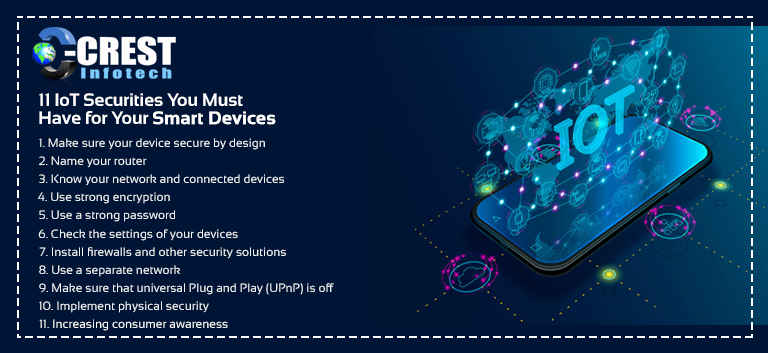OT Securities You Must Have
- Make sure your system is built to be secure.
Make sure it is safe by design prior to buying an IoT system or solution. If the supplier is unable to provide the necessary information, reconsider opting for a specific product or solution. You can also ensure that the manufacturer provides the system with timely patches and updates over its entire lifespan. At that moment, the timely patches and updates for the system keep it updated with the latest trend.
- Your router’s name
Change your router’s name from the one given by the manufacturer. The name of the manufacturer given is used to describe the router model. The name of the router needs to be unusual and not connected to your personal details, such as your name or address. A personal identifier should not be the name of the router.
- Know your linked devices and network
The moment your computer connects to the Internet, right at that point, it becomes vulnerable. With more and more network-connected devices, it is difficult to keep track of them. You have to know about the network, the devices connected to it, and the type of information that the devices can access in order to be secure.
If the devices have social sharing features, carefully pick the permissions.
- Using effective encryption
Your router needs to have a good method of encryption. Do not use a public Wi-Fi network or one that does not have a secure protocol for encryption. Using the new encryption standards instead of WEP or WPA, such as WPA2. The installation of updates and timely fixes helps to provide a low risk level.
- Use a powerful password
Changing the default passwords is the first primary thing to do when installing a system. The cyber attackers might already know the IoT device’s default passwords and usernames. If the system does not allow you to change your password, consider another one. Second, use a secure username and password that can not easily be found. “Ditch the passwords such as “password” or “123456.”
A mixture of lower case, upper case, numbers, and special characters should be the password. Also, make sure you always update your password and username.
- Check the devices’ settings
Smart devices typically come with default settings that could be inappropriate for your computer. The worst thing is, some devices won’t allow these settings to be changed.
Poor passwords, disruptive characteristics, permissions, and open ports are the items that have to be tested depending on settings.
- Install firewalls and other solutions for defence
The security gateways are situated between the network and your IoT devices. They have more power, memory, and capabilities for processing than IoT devices. To prevent hackers from accessing your IoT computers, you can add more powerful features, such as a firewall.
The firewall systems block unwanted traffic over the wire and run IDS or IPS to scrutinise the network system, which is an intrusion detection or intrusion prevention system.
You may use vulnerability scanners to unveil the security vulnerabilities inside the system to make the job easier. To find open ports, you can use a port scanner. - Using a network that is separate
If you run a large company, then this tip is for you. One of the most strategic approaches to ensuring IoT security is to use a different network for smart devices, apart from the business network for IoT devices. When segmentation is in operation, they will not get hold of your business details or sniff the bank transfer even though the hackers draw the way into the IoT devices.
- Ensure the UPnP (Universal Plug and Play) is off
The Universal Plug and Play is a series of network protocols allowing network devices to seamlessly discover the existence of others. But the same thing has made it easier for you to be exposed to hackers outside. Nowadays, UPnP comes as a default setting on many routers.
So check the settings and disable this function if, for the sake of convenience, you do not want to compromise protection.
- Implement physical security
If you have the luxury of using a phone to operate a smart screen, then be doubly careful not to lose your phone. Have security on the computer such as pin, password or biometrics In addition to this , make sure that your phone can be remotely deleted. Have automated backups or limited backups in place for critical data.
- Increasing consumer awareness
While buying an IoT computer, many consumers forget protection. Users must be aware of the most recent security measures that need to be made available for defence. You need to be mindful of upgrading the default credentials and framework for software updates as a user. Beware of the security risks that exist around you.
Bottom line
Given the dangers, it is no brainer that there is a mammoth opportunity in the Internet of Things. Like a smart kettle, it has made daily chores simple. But the best experience is when they are absolutely protected with these devices. By taking the requisite security steps, you can enjoy the benefits of the devices to their fullest without any lag.
You can also Hire Mobile Developer. Contact Crest Infotech to know more about Dedicated Development services in Details.



